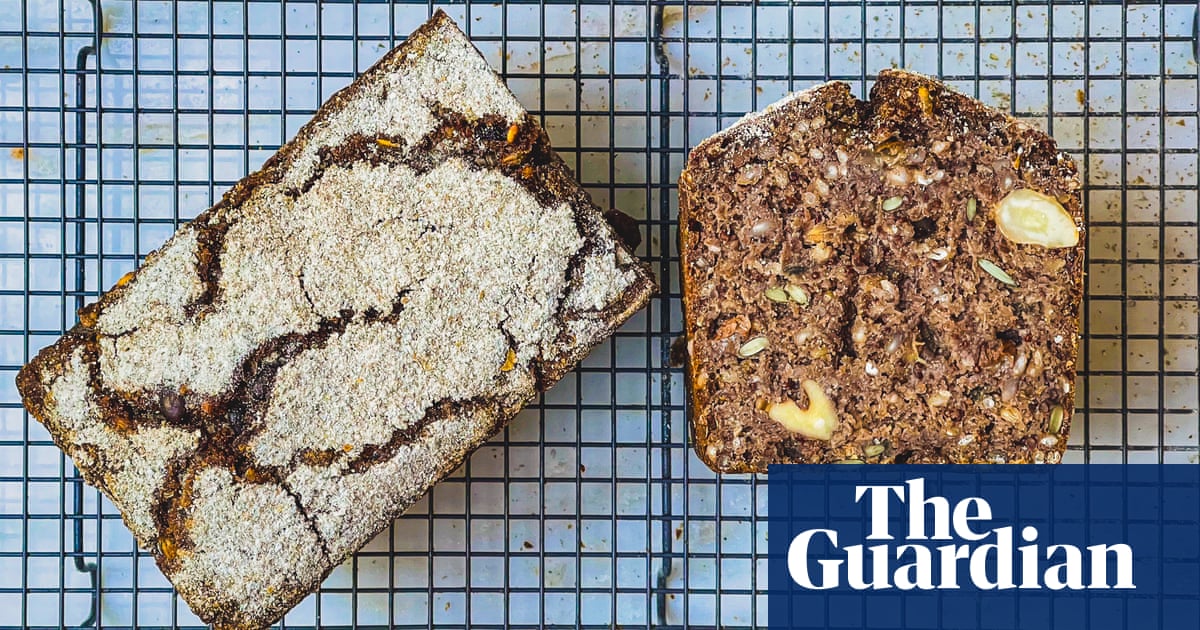Today’s rich, nutritious and no-knead bread is a cornerstone of my weekly routine. Every Saturday, I make a simple rye bread dough, and gather whatever grains, nuts and seeds need using up – from forgotten millet to that last handful of brazil nuts – and soak them overnight. By Sunday lunchtime, the house will be filled with the homely aroma of fresh bread emerging from the oven.
When my daughter won’t eat anything but a slice of toast, I want to know she’s still being nourished, so I’ve raised our nutrient baseline by reformulating the recipes for our everyday staples – that is, bread, pasta, porridge and even cakes – with whole grains, omega-rich seeds and nutrient-dense ingredients such asmoringa powder. Of course, every family has its own tastes and comfort foods, so these changes need to be gradual. What matters most is that our children eat a diverse range of fruit and vegetables, but whole grains are also a big win.
Today’s dense, sustaining loaf is almost a meal in itself. If your family is more used to white bread, begin by including a little wholewheat flour in your usual dough, then experiment – add a touch of buckwheat flour, say (just 5–10% of the total flour weight), or ancient grains such as khorasan or emmer. Soaked grains and seeds are another easy upgrade, and boost the nutritional value of any loaf, while a few raisins or chopped dried fruit can help improve the bread’s appeal, especially to children.
The diversity in this loaf isn’t just good for our bodies, it’s vital for the planet, too. By incorporating a wider range of grains and seeds into our diets, we help support agricultural diversity beyond the traditional big four – wheat, corn, rice and soy – which currently provide 60% of the world’s plant-based calories. These industrial monocrops rely heavily on synthetic inputs and intensive farming, while many traditional and alternative grains thrive with fewer interventions. Each time we choose buckwheat, millet or rye, we cast a small but meaningful vote for a more resilient food system.
When blending flours, keep at least 50% of the mix as dark rye or glutenous flour such as wholewheat or emmer. Avoid using too much buckwheat – 100–200g is plenty – because it can turn gummy. That said, this recipe also works beautifully with 100% dark rye or wholewheat flour. I don’t add salt or molasses to the mix, because our young baby eats this bread, too, so we try to keep sodium and sugar low. That said, adding either or both will enhance the loaf’s flavour.
Traditionally, this kind of loaf would be baked in a Pullman-style tin with a lid – I use a large tin, about 33cm x 10cm. If you have a thermometer or probe, bake until the centre reaches 96C, though it’s also a forgiving bread if you don’t. The key is to let the loaf set fully, so leave to cool for at least five hours before slicing, and ideally wait until the next day to do so. I usually slice it thinly and store in an airtight container – it keeps well in or out of the fridge; it freezes beautifully, too.
Makes1 loaf
For the seed mix350g whole grains– buckwheat, pearl barley, brown rice, quinoa, oat groats, rye berries, etc350g mixed seeds, dried fruit and nuts– sunflower seeds, linseed, pumpkin seeds, raisins, dried apricots, goji berries, brazil nuts, walnuts, hazelnuts, etc2 tsp caraway seeds(optional)1 tbsp sea salt(optional)50ml molasses or honey(optional)
For the dough550g dark rye flour, or a mixture of flours if you have bag ends that need using (wholewheat bread flour, buckwheat, emmer, etc), plus extra for dusting1½ tsp instant dried yeastOil, for greasing
The night before baking, in a large bowl mix the whole grains, the mixed seeds, dried fruit and nuts and 650g cold water. Add any or all of the optional ingredients, stir well, then cover and leave to soak at room temperature overnight.
In a second large bowl, mix the flour, yeast and 350g cold water to form a stiff dough, then cover and leave to sit alongside the soaking grain mix.
The next day, grease one large or two small loaf tins with a little oil, then line with baking paper or dust with flour. Tip the soaked grain mix into the dough, mix thoroughly until well combined, then scrape into the tin(s). Smooth out the top, dredge with flour, cover and leave to prove at room temperature for one to four hours, until the dough is well risen and the flour topping has cracked.
Bake at 250C (230C fan)/490F/gas 9½ for 30 minutes, then turn down the heat to 220C (200C fan)/425F/gas 7 and bake for another 30 to 40 minutes, until dark brown on top. Turn out on to a wire rack and leave to cool completely for at least five hours before slicing, ideally the next day.
